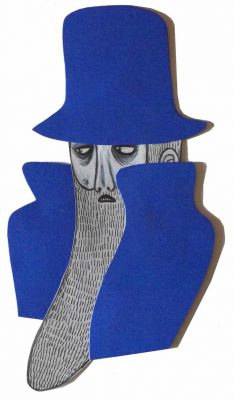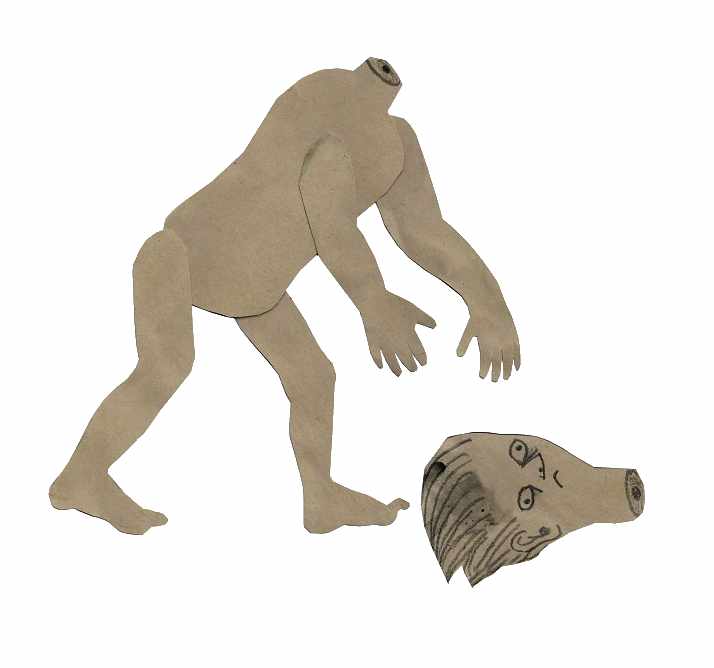Tales to give you goose bumps
“One day, fear knocked at the door, courage got up and went to open it,
only to find that there was no one out there.”
Martin Luther King
“To grow up, get scared”.
René Char
Since the dawn of time, humanity has invented stories to overcome its fears and explain the world. We can imagine that, as soon as human beings were able to speak, they told each other stories. Because these stories helped them to overcome their fears, to create links, to reflect, to transmit…
Tales that inspire fear are among the oldest stories. Witches, dragons, ogres, bogeymen, ferocious wolves… Fear is an emotion inherent to human beings who have always been confronted with a world that is both welcoming and threatening.
CHILDHOOD FEARS
What kind of stories should we tell our youngest children to ease their fears? How do stories help children to grow and develop? Why do they like scary stories so much?
There are childhood fears, linked to the stages of a child’s development: fear of death, abandonment, separation, darkness or ghosts.
Moreover, each child has his or her own fears, linked to his or her experience. Some current topics are difficult to talk about, such as war or illness.
Fear has a self-protective function and is one of the primary emotions. Fear encourages us to remain vigilant, to face potential dangers. It is the other side of courage, that something we have to face. How can we talk about it, how can we tame it, to make it an ally, if not a friend? Storytelling can be an extremely effective way to do this.
One of the greatest fears of children is that of abandonment… In Europe, we have the Convention on the Rights of the Child – CRC, approved by the United Nations General Assembly on 20 November 1989.
FEARS IN STORIES… SCARY STORIES
Fear is present in fairy tales – read the tales: La bambina e l’Orchessa (The little girl and the ogress), Il lupo e la bambina golosa (The wolf and the greedy little girl), Barba d’Argento (Silverbeard).

However, fairy tales have different levels of reading that reveal psychological aspects inherent to each of us. Bruno Bettelheim, in Psychoanalysis of Fairy Tales (1976) focuses on one of the most famous fairy tales of the Grimm brothers, “Hansel and Gretel”, where different themes are addressed, such as: family, fear of abandonment, fear of evil creatures… The two children are left alone in the forest, a timeless and symbolic place where they will face dangers to gain their independence. An initiatory journey through darkness and evil. The dark side of fairy tales has always fascinated and disturbed, because of its ability to make the unreal plausible and to combine tension and emotion. Wonderful tales tell truths that children are able to decipher deep inside themselves.
EVIL CREATURES
Fear in fairy tales is embodied in evil creatures, scary places and environments, dark forests with ogres, witches and ravenous wolves. These elements, frightening as they are, both attract and worry.
The fear that hovers in the marvellous tales is often associated with curiosity, which pushes the protagonists to overcome their fears and limits.
In his introduction to the collection Fiabe italiane (Italian Folk Tales), Italo Calvino defines fairy tales as “true” because they show absolutely concrete and real aspects and situations mixed with the marvellous and the extraordinary (outside place and time). They test our ability to react to adversity. Knowing fear allows us to face and overcome it, so that we can better control it. Stories allow children to confront their fears in the protective environment of their homes.
TO GROW UP, GET SCARED
The modern world sometimes tends to remove the most frightening elements of stories in adaptations for the general public. Fairy tales are a way to learn about fear without being in danger. According to psychologists, being afraid in stories helps children to prepare for the difficulties of life.

So is fear purely negative? Of course not! On the contrary, it is formative, and even, let’s say it, necessary, even essential. Let’s take a look at children: one of the great joys of childhood is to scare people… or to be scared. Do bogeymen (or their modern successors) scare them? Yes, but they are also their friends, because without them, fear, which can be expressed, explained and understood, could not replace the silent and devastating anguish. Playing with our fears and having fun with them helps us to overcome them.
Jonathan Gottschall, in his book The Literary Animal: Evolution and the Nature of Narrative (2005), writes that narratives are at the core of what makes us human: oral storytelling is a foundational tool of humanity, which has helped to curb fears, from yesterday to today
EXORCISING FEARS
What would man be without fear? This is the question posed by the tale – widely spread in Europe – of John without fear (The boy who wasn’t afraid). Without it, the story tells us, one cannot socialise, one cannot marry, one cannot grow up and become a full human being.
The tale tells us: without fear, what do we really know about life?
SEE THE LIBRARY OF STORIES :
– Il ragazzo che non aveva paura (The boy who was not afraid)
– La bambina e l’orchessa (The little girl and the ogress)
– Il lupo e la bambina golosa (The wolf and the greedy girl)
– Candida e i briganti (Candida and the robbers)
– In silenzio (In silence)
– Barba D’Argento (Silverbeard).
Let yourself be overwhelmed by the delicious pleasure of getting goose bumps!
ACTIVITIES
1. Inventing a thriller with the little ones
– Based on A Dark Story, (a traditional hike adapted by Ruth Brown), build a bogy hike.
– Start the stork hike by setting the story in a large area: the sea, the land, the sky, the city, the mountains, the forest… It is easier to find a “chain” to hang the elements, one after the other, which will be smaller and smaller. It’s the ideal way to make the little one wait with bated breath, while letting him or her see the rest of the story: there’s something in something… which is still in something. Guess what!
– It’s the anticipation that creates the thrill. This kind of story can be told very early on. You can start improvising on this scheme with the children themselves, from nursery school onwards.
2. Tell nursery rhymes
Children love to be scared. They even need it as a measure of their own well-being, and for the pleasure of shivering.
Mummy, look under my bed
There’s not a mouse!
Daddy, look in my wardrobe
For a black dragon!
Mummy, lift up the pink curtain,
I saw something move!
Daddy, open my drawer a little, Just to see,
I am afraid, in the evening.
Corinne Albaut